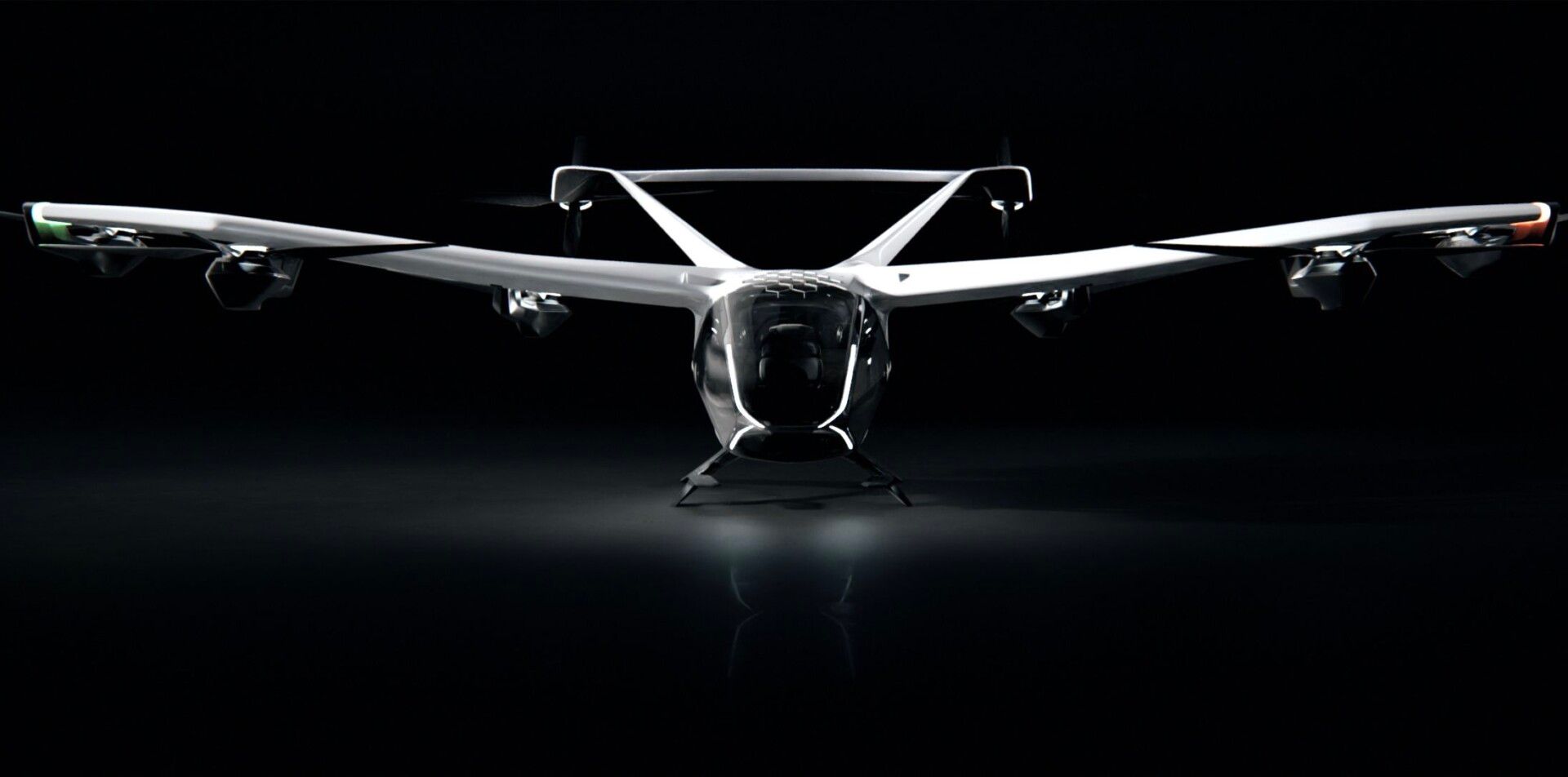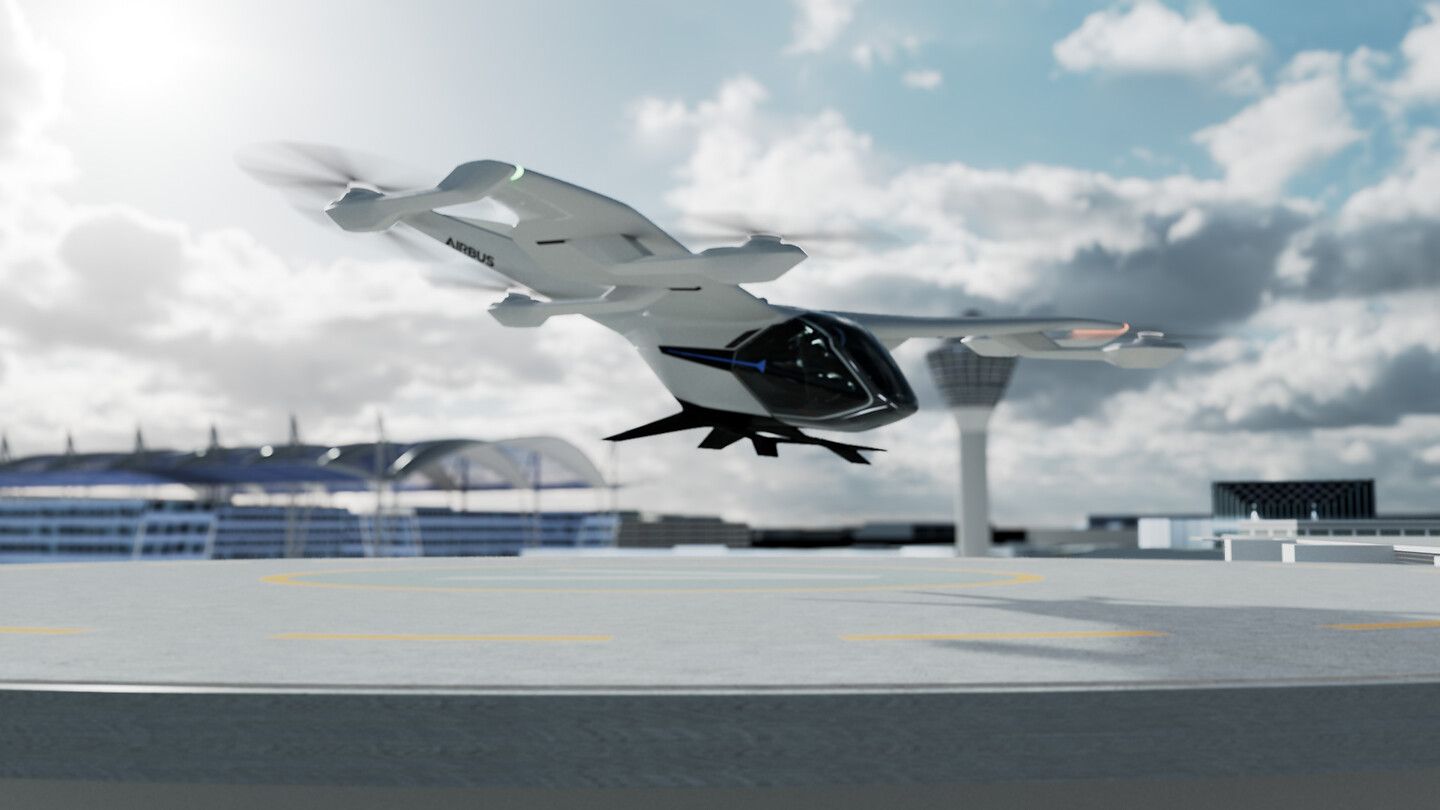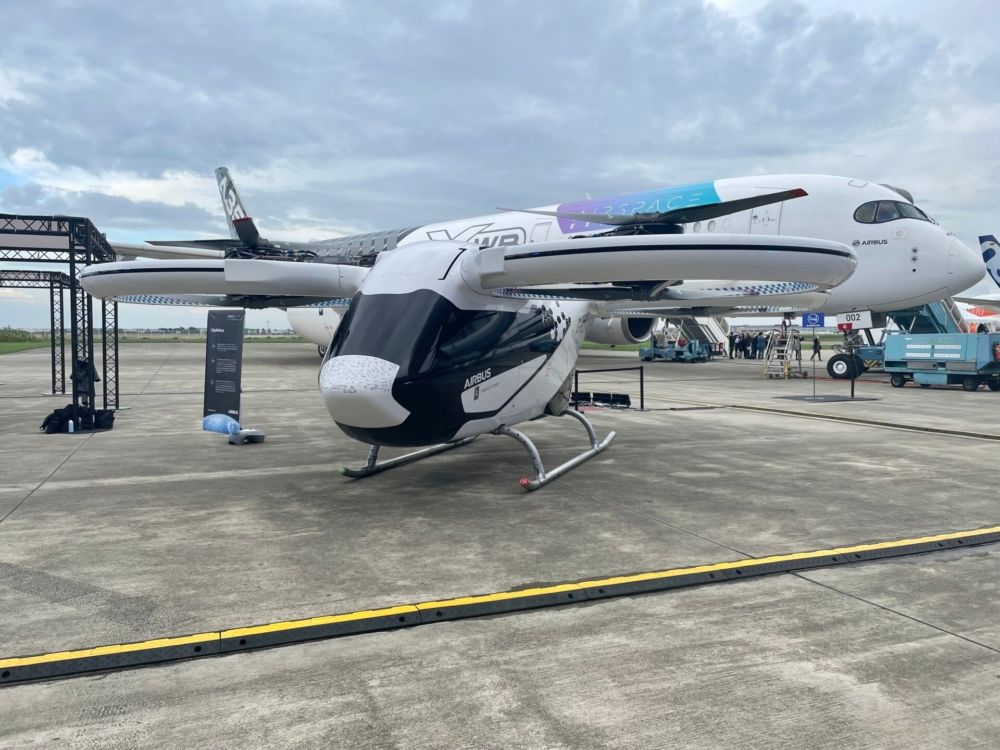The CityAirbus NextGen (NG) is an all-electric, four-seat prototype aircraft. It has a cruise speed of 75 mph (120 km/h) and an operational range of 43 NM (80 km). The design is based on a lift and cruise concept, which makes it ideal for urban and regional mobility programs. Lift and cruise designs allow some propulsion units to be used for lift and others for cruise (forward thrust). Lift and cruise output may be combined in some or all of the propulsion units.
In the base configuration, the CityAirbus NG has eight identical propulsion units. The two rear rotors sit at about a 35 degrees angle from the horizontal and work as lift units during hover, combined lift, and forward thrust units during cruise flight. The six-wing propulsion units are located on booms, whereas the two rear units are installed near the wing trailing edge.
Want answers to more key questions in aviation? Check out the rest of our guides here.
The CityAirbus NG architecture
Airbus built the CityAirbus NG to enable a sustainable urban and regional mobility program that is more integrated into the existing aviation ecosystem. According to Airbus,
"Urban air mobility leverages the sky to better link people to cities and regions, giving them more possibilities to connect. At Airbus, we believe urban air mobility can positively contribute to a multimodal mobility system. CityAirbus NextGen has incorporated our decarbonisation strategy into the design from the very beginning. Building on the expertise of partners in multiple urban environments, the prototype for CityAirbus NextGen is set to become a technological lever in the creation of a more integrated and innovative mobility ecosystem."
The multi-copter has a wing with a V-shaped tail. The tail provides enhanced stability during vertical takeoff and landing (eVTOL). Since all rotors rotate during forward flight, the wing’s boundary layer is barely formed. Therefore, the attached flow over the wing at cruise speeds of 65 knots (120 kph) is expected.
Similarly, all rotors are used during hover. The rear rotors go from 35° to 45° tilt, contributing to forward speed with more than 70% of the thrust. Due to the absence of control surfaces, the aircraft is controlled by varying the RPM on the eight rotors using the fly-by-wire system. Airbus takes advantage of this technology to provide control inputs to the aircraft.
Pros and cons of the CityAirbus architecture
The lift and cruise design has more speed and range than a conventional multi-copter. The tilt transition is simple in that rotor loads do not change significantly during the transition. With the aircraft control performed using the rotor RPM, better control of the rotor speed (and overspeed) is achieved. The energy consumption is significantly lowered because the wing contributes nearly half the lift in forward flight.
The CityAirbus NG has a larger airframe than a conventional four-passenger multi-copter with a comparable speed and range. A larger structure generated more parasite drag (drag due to size) and induced drag (drag due to weight). Greater mass requires higher hovering energy, resulting in a reduced operational range.
What are your thoughts on the architecture of the CityAirbus NG? Tell us in the comments section.




